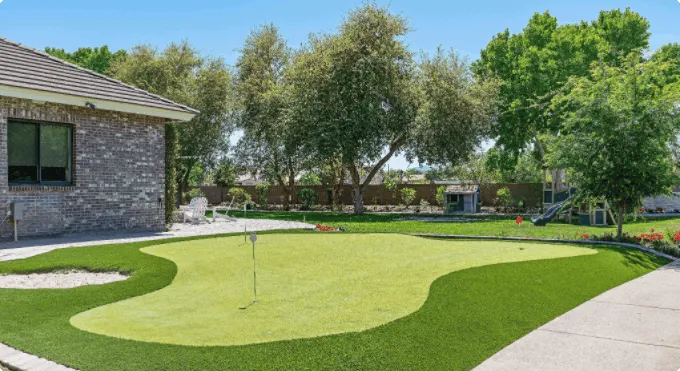
- Afrikaans
- Arabic
- Belarusian
- Bengali
- Czech
- Danish
- Dutch
- English
- Esperanto
- Estonian
- Finnish
- French
- German
- Greek
- Hindi
- Hungarian
- Icelandic
- Indonesian
- irish
- Italian
- Japanese
- kazakh
- Rwandese
- Korean
- Kyrgyz
- Lao
- Latin
- Latvian
- Malay
- Mongolian
- Myanmar
- Norwegian
- Persian
- Polish
- Portuguese
- Romanian
- Russian
- Serbian
- Spanish
- Swedish
- Tagalog
- Tajik
- Thai
- Turkish
- Turkmen
- Ukrainian
- Urdu
- Uighur
- Uzbek
- Vietnamese
Tips for Successful Artificial Turf Installation in Your Backyard Space
Dec . 11, 2024 22:48 Back to list
The Benefits of Artificial Turf Installation
In recent years, the popularity of artificial turf has surged, transforming landscapes in residential and commercial spaces alike. Known for its durability, low maintenance, and aesthetic appeal, artificial turf installation is becoming a preferred choice for homeowners, schools, and sports facilities. This article explores the numerous advantages of artificial turf, its installation process, and the considerations to keep in mind when making the switch from natural grass.
One of the primary benefits of artificial turf is its low maintenance requirements. Unlike natural grass, which demands regular mowing, watering, and fertilizing, artificial turf needs minimal upkeep. Homeowners and businesses can save valuable time and resources that would otherwise be spent on lawn care. With artificial turf, there's no requirement for pesticides or herbicides, making it an environmentally friendly option that contributes to a healthier ecosystem.
Another significant advantage of artificial turf is its durability. High-quality synthetic grass is designed to withstand various weather conditions, including heavy rains, extreme heat, and heavy foot traffic. This makes it an ideal solution for sports fields and playgrounds. Moreover, artificial turf maintains its lush green appearance year-round, eliminating the seasonal browning that often plagues natural lawns. For those living in arid regions or areas prone to drought, artificial turf offers a sustainable alternative that reduces the dependence on water resources.
Aesthetically, artificial turf provides a consistently beautiful landscape. Homeowners can enjoy a perfectly manicured lawn without the hassle of weeding or patching bald spots. Additionally, advancements in technology have led to the creation of more realistic and visually appealing synthetic grass, featuring shades of green and textures that closely mimic natural grass. This innovation ensures that artificial turf installations blend seamlessly with any outdoor setting.
artificial turf installation

The installation process for artificial turf typically involves several key steps. First, the area where the turf will be placed must be properly prepared. This involves removing existing grass, weeds, and debris, followed by grading the ground to ensure proper drainage. Once the base layer is established — often comprising crushed stone or sand — the turf is laid out and secured in place. The final steps include infilling the turf with materials such as rubber or sand to provide stability and enhance the realistic feel of the surface.
While the benefits of artificial turf are significant, there are considerations to keep in mind before making the investment. The initial cost of installation can be higher than that of natural grass. However, many homeowners find that the long-term savings in maintenance and water usage often outweigh the upfront costs. Additionally, it’s crucial to choose a reliable and experienced contractor for installation to ensure high-quality results.
Another consideration is the temperature of artificial turf. Synthetic grass can become noticeably hotter than natural grass, especially in direct sunlight. This can be a concern for pets and children playing on the surface during the summer months. To mitigate this, some manufacturers have developed turf materials that are specifically designed to stay cooler underfoot.
In terms of environmental impact, artificial turf is made from non-biodegradable materials, which raises concerns about its contribution to landfill waste at the end of its life cycle. However, many companies are now focusing on creating recyclable turf options and implementing eco-friendly practices in the production process. As awareness of sustainability grows among consumers, the demand for greener alternatives in the artificial turf industry is likely to increase.
In conclusion, the installation of artificial turf offers a multitude of benefits, including low maintenance, durability, aesthetic appeal, and water conservation. With proper installation and care, artificial turf can provide a beautiful, functional outdoor space for years to come. Whether it's for a backyard, sports field, or community park, considering the advantages and challenges of artificial turf can help stakeholders make informed decisions that reflect both their needs and environmental responsibilities. As we continue to seek sustainable solutions in our landscapes, artificial turf stands as a compelling option for enhancing our outdoor experiences.
-
The Benefits of Artificial Turf for Indoors
NewsJul.15,2025
-
How Artificial Grass Suppliers Ensure Quality Products
NewsJul.15,2025
-
Artificial Grass and Pets: A Space for Relaxation
NewsJul.08,2025
-
Balcony & Outdoor Decoration with Artificial Grass
NewsJul.08,2025
-
Best Indoor Artificial Grass for Home
NewsJul.07,2025
-
Best Pet Turf for Dogs: Safe & Durable Artificial Grass Options
NewsJul.07,2025
Products categories









